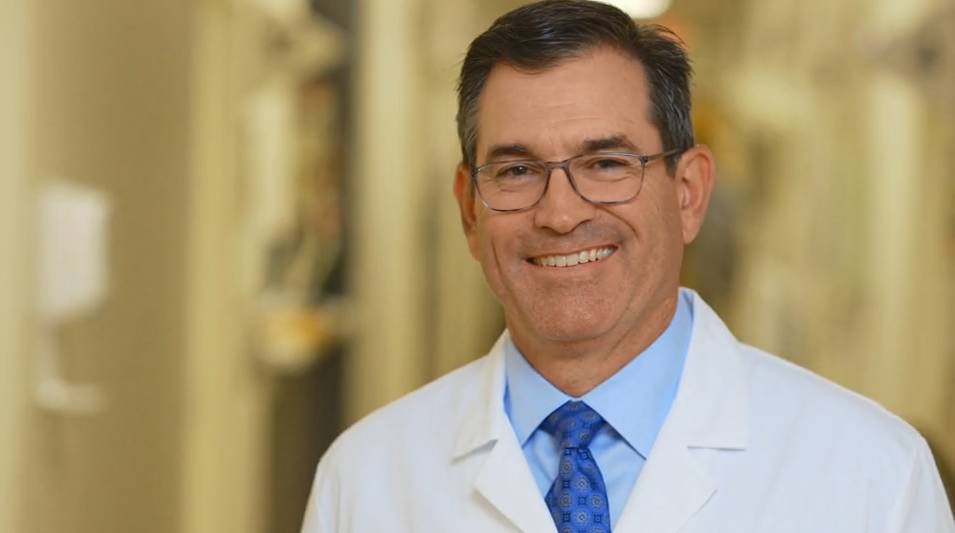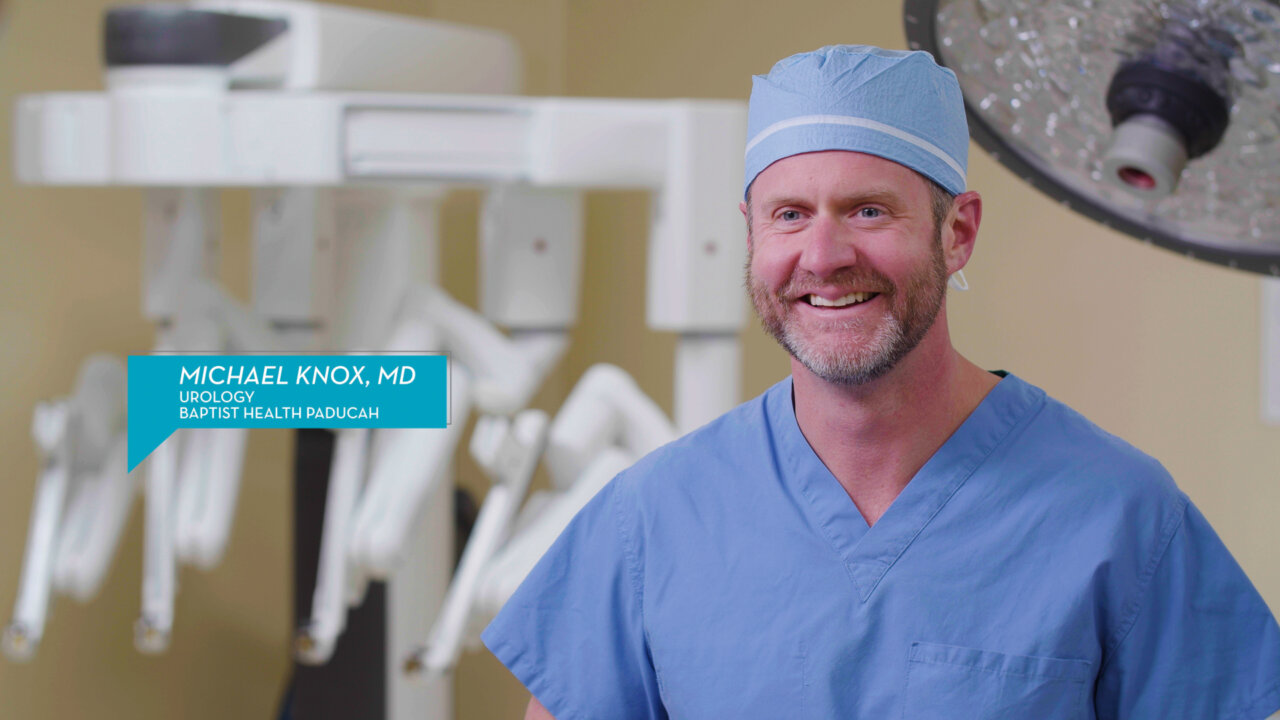Robot-Assisted Knee Replacement In Lexington
Baptist Health Lexington: Robot-Assisted Knee Replacement
Baptist Health offers robot-assisted knee replacement for improving surgical outcomes. Learn more about our robotic knee surgery in Lexington, Kentucky.
Robot-Assisted Knee Replacement in Lexington, KY, HealthTalks Transcript
Michael E. Kirk, MD:
There are two major ways of doing a knee replacement surgery, or total knee arthroplasty surgery, as it’s formally known. One is by manual instrumentation and the other is robotically assisted.
With the system that I’m using currently, it generates a 3D model, which is visually satisfying for me as a surgeon. This is what the end of their femur looks like, this is what the top of the tibia looks like, and then we can decide what sort of cuts we’re going to make on the end of the bone that will perfectly balance that knee at the end of the day. From a surgeon’s perspective, that’s real-time data that I can utilize and say, “OK, not only does it feel good, but I have the numbers to support it.”
I love this technology. I love what it’s doing for me as a surgeon, and I love what it’s doing for my patients.
Next Steps and Useful Resources
Find a Provider
Should I Get a Knee Replacement?
What Is Robotic Surgery?
How Does Robotic Surgery Work?



